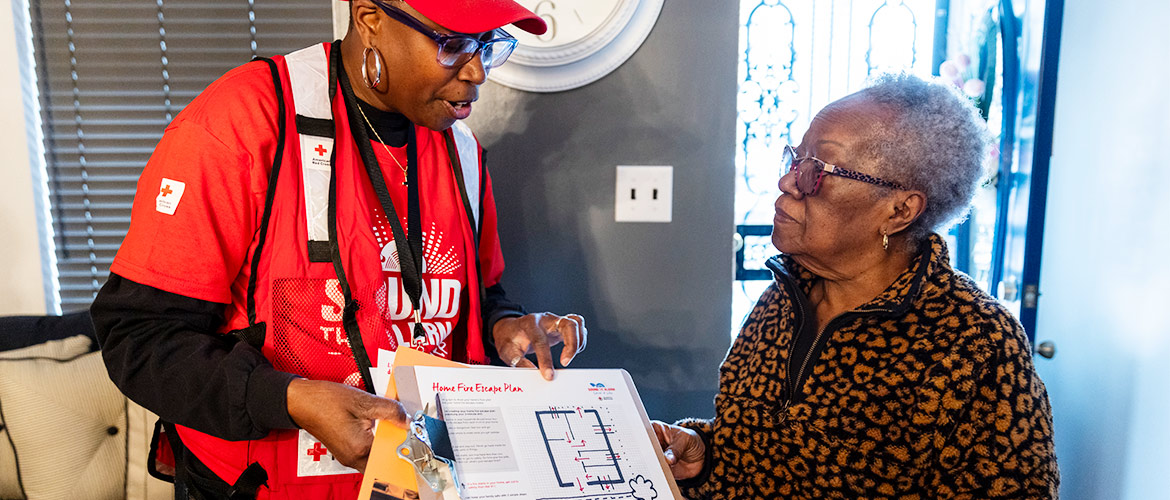People depend on the structures and resources in their communities and homes to meet essential needs. Transportation to get to work, grocery stores, medical appointments and pharmacies. Public space and programs for physical fitness. Safe and affordable housing.
Strengthening neighborhood and built environment is a key focus area of Health Care Service Corporation’s major grant program. In 2023, the company invested more than $9 million to community organizations in Illinois, Montana, New Mexico, Oklahoma and Texas to advance work addressing social and economic factors that influence health and wellness.
“We’ve focused our giving to be even more inclusive of the social factors outside of traditional health care that can have a strong impact on the health of people in our geographies,” says Clarita Santos, executive director of corporate and civic partnerships for HCSC. “Our giving is designed to support our partners who best understand the needs of our members and the communities in which they support, with a goal of making a real difference in improving population health.”
In 2023, HCSC continued its partnership with National Fitness Campaign bringing more than 30 fitness courts to neighborhoods in Illinois and Texas and announced a commitment of an additional $1.2 million in funding to expand the partnership to bring Fitness Courts® and wellness programming to communities in Montana, New Mexico and Oklahoma.
HCSC is investing in organizations that are meeting diverse needs of communities across the five states.
Zuni Pueblo, in Western New Mexico, is one of the longest continuously inhabited settlements in North America. With support from HCSC’s New Mexico health plan, the Zuni Youth Enrichment Project is improving the access and safety of more than 60 miles of trails that connect most Zuni neighborhoods.
“Our Zuni ancestors were farmers, ranchers and hunters, so physical activity was part of their daily lives,” says Tara Wolfe, ZYEP program manager.
The New Mexico plan also announced plans to open a neighborhood center next year in Albuquerque’s South Valley to increase access to no-cost community resources and improve the health and wellness of members and residents.
“We believe that health care is local,” says Janice Torrez, president of the New Mexico plan. “It’s important for us to be in the neighborhoods where resources are needed.”
In San Antonio, a grant is helping families become active, eat healthier and reduce diabetes and obesity rates. The nonprofit organization San Antonio Sports offers 12-week summer program offering adults and teens more than 100 weekly fitness events at no cost with the Fit Family Challenge. Classes are available for families with children 4 to 12 years old to eliminate the need for childcare.
The program helped about 5,000 San Antonians increase their physical activity, hundreds of participants also got health screenings.
“We hope by offering Fit Family Challenge we can provide families the opportunity to be active and bond through the shared goal of getting fit,” says Dorsena Picknell, senior director of sales and development.
Each year thousands of people who live in rural areas of Oklahoma drive 30 miles or more for urgent medical care in Tulsa. Hospitality House of Tulsa, which houses and provides free meals for families and caregivers in this situation, is using a grant from HCSC’s Oklahoma health plan to expand a program that offers discounted hotel rates near care sites.
The discounts offered through its Lodgingly website significantly expand the number of people the organization can help beyond the capacity of its 13 suites, says Toni Moore, Hospitality House of Tulsa’s president and CEO.
“These families still have their house payments, rent, car payments and other financial obligations,” Moore says. “This is about saving families out-of-pocket expenses and decreasing their costs as much as we can.”
The American Red Cross received a grant from HCSC’s Illinois health plan to reduce fire-related deaths.
With the Alarm & Youth Preparedness Program, the organization installs free smoke alarms in homes and educates students and families about fire safety. Fire-response heat maps help identify areas and communities most in need.
“Having a safe environment is a priority for families, and one of the easiest things you can do to create a safer environment is to install a smoke alarm and develop an escape plan,” says Hilary Duerksen, the American Red Cross’ senior philanthropy officer.

